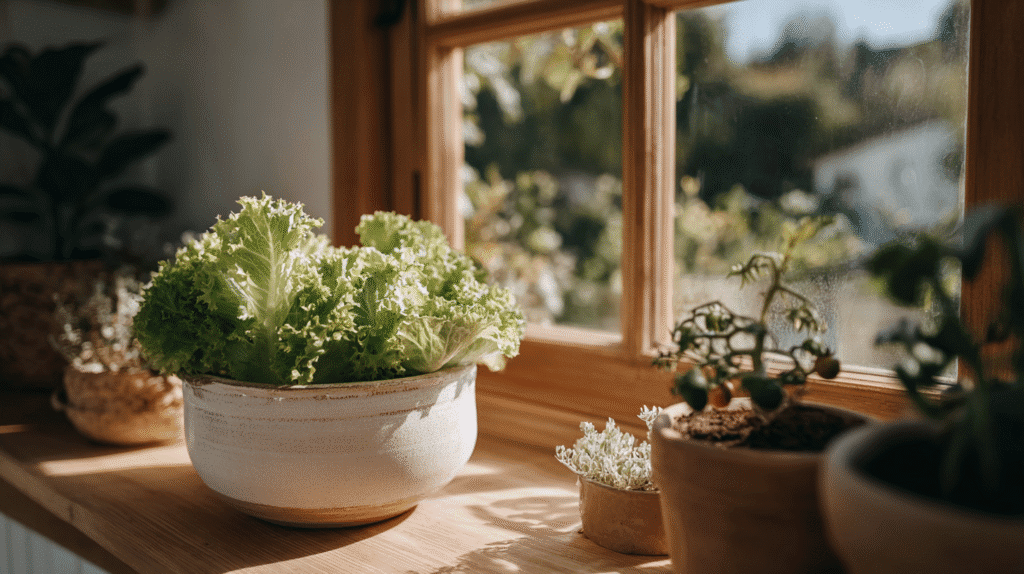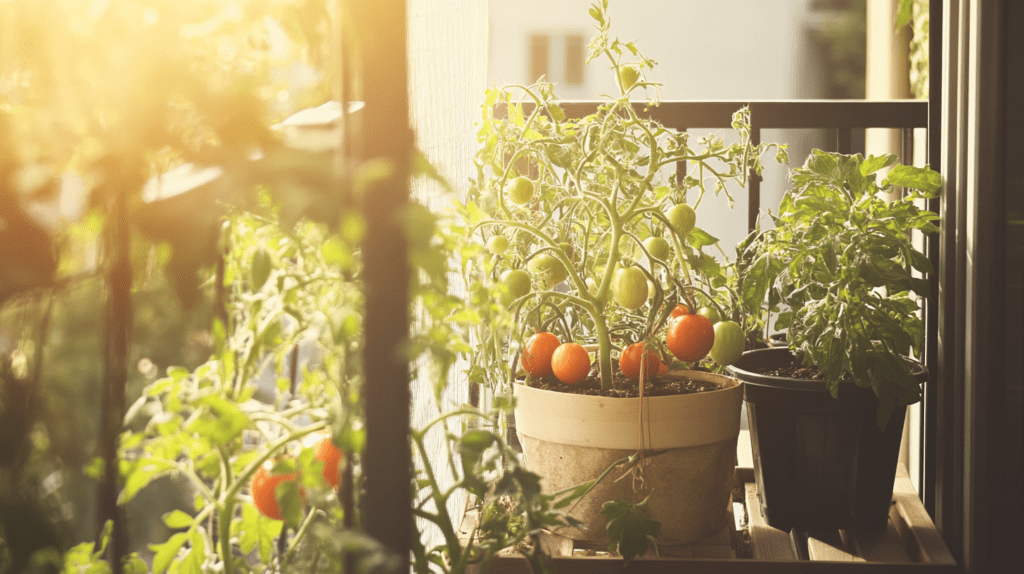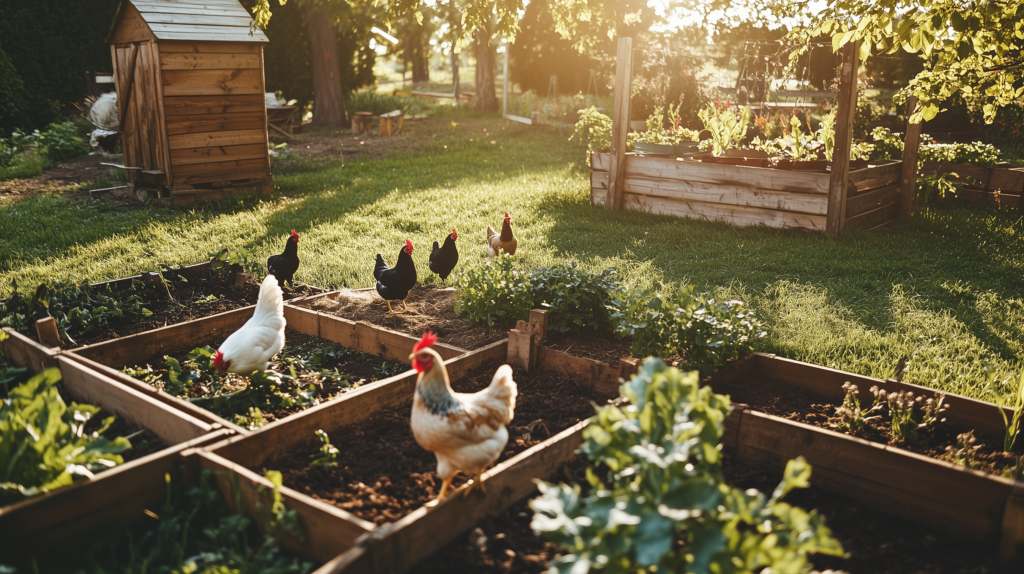This post may contain affiliate links, including those from Amazon Associates. If you make a purchase through these links, I may earn a commission at no additional cost to you. Learn more about our affiliate policy.
When I first began exploring self-sufficiency in a small apartment, I thought fresh, homegrown vegetables were something I’d have to wait for, something that required a backyard, a greenhouse, or at least a balcony.
But over time, I realized that the homesteading spirit isn’t defined by how much land you have. It’s about what you do with the space you have, right where you are.
Apartment homesteading is an invitation to bring a little more life into your home.
Even if all you have is a sunny windowsill or a few square feet of counter space, you can grow food indoors. It doesn’t have to be complicated, and you don’t need expensive equipment to get started.
You just need a handful of easy, forgiving crops that will thrive inside with the right care.
These seven vegetables are perfect for beginners, adaptable to apartment life, and will give you the satisfaction of fresh harvests year-round.
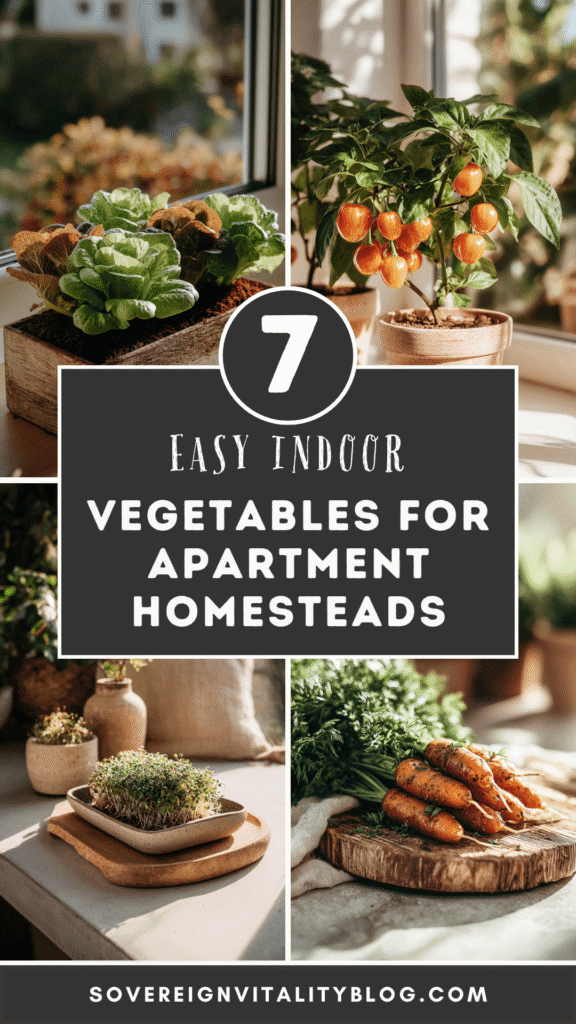
Setting Yourself Up for Indoor Growing Success
Before we dive into the list, it helps to create the right growing environment for your plants.
Light is the first thing to consider. A bright, south-facing window is ideal because it offers the longest exposure to natural light.
East-facing windows can work well for leafy greens that don’t require intense sunlight. If your space doesn’t get enough daylight, a small LED grow light can make all the difference, ensuring plants receive the 6–8 hours they need to thrive.
The right container is just as important. Choose pots with good drainage so roots don’t sit in water. Shallow containers are fine for microgreens and leafy greens, while deeper pots are needed for root vegetables like carrots and radishes.
A light, well-draining potting mix will keep roots healthy and encourage growth.
Learn more about container gardening as a renter here.
Finally, keep your growing area in a comfortable temperature range, most indoor vegetables are happiest between 60 and 75°F. Good airflow is important too, so your plants don’t develop mold or mildew. Even a small fan set on low can help keep air moving gently around them.
1. Microgreens and Sprouts
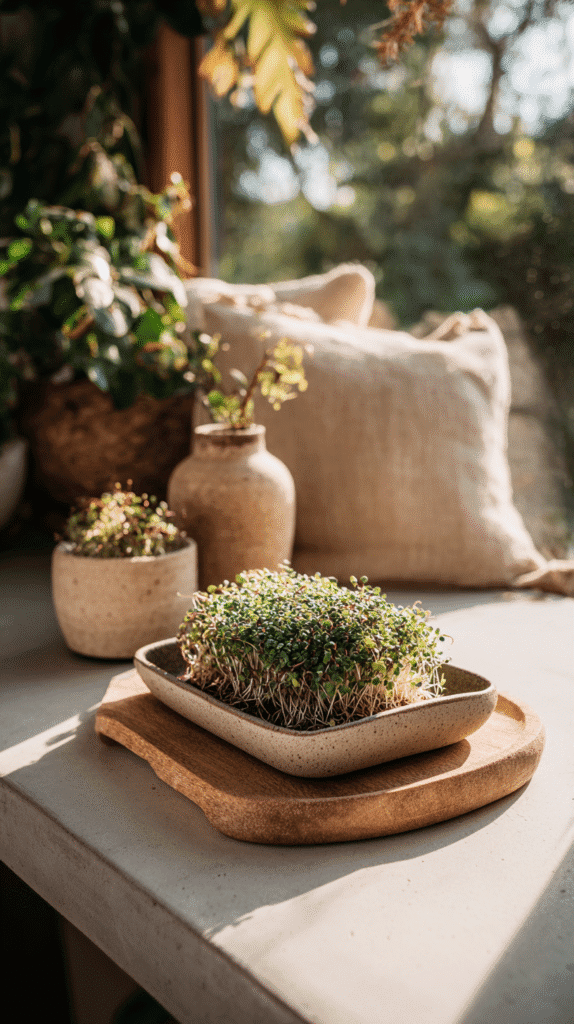
If you’re looking for a quick win, microgreens are the place to start.
These baby plants pack a surprising punch of flavor and nutrition, and they don’t need much space at all. You can grow them in shallow trays on a windowsill or even on a small kitchen shelf.
Within 7 to 21 days, you’ll be harvesting tender greens to sprinkle on salads, sandwiches, or soups.
What to grow:
- Kale
- Radish
- Mustard greens
- Sunflower shoots
They thrive with minimal care, and because they grow so quickly, you can start a new tray every week for a steady supply.
Sprouts are even simpler because they don’t require soil. All you need is a jar, a mesh lid or cloth, and some seeds. Soak the seeds overnight, then rinse them twice a day until they’re ready to eat, usually in less than a week.
Best sprouts to try:
- Mung beans
- Lentils
- Broccoli seeds
Both microgreens and sprouts are perfect for apartment living because they fit anywhere and give you results fast, boosting your confidence to try more crops.
2. Leafy Salad Greens
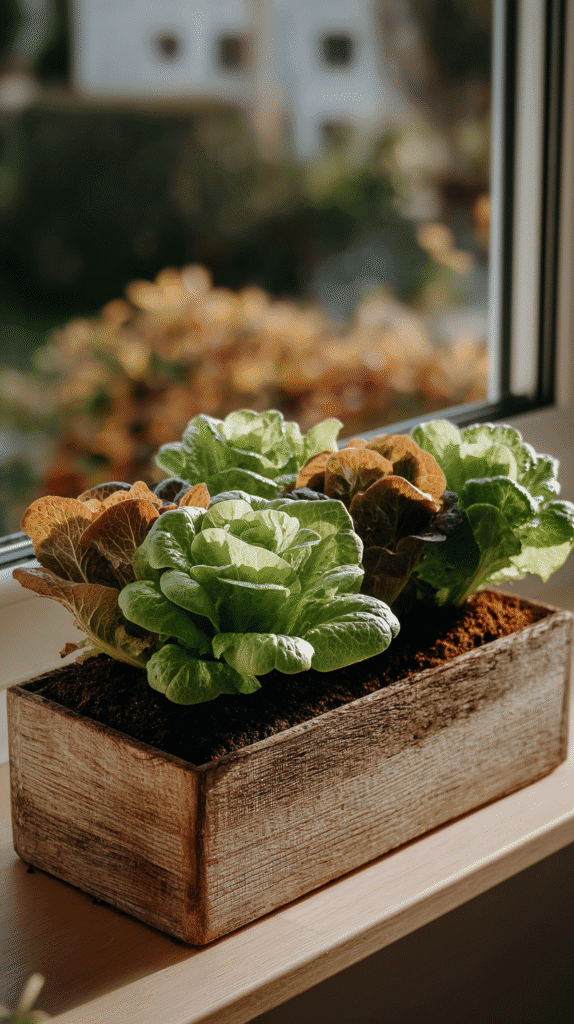
Leafy greens are another forgiving crop, and they’re easy to grow indoors year-round. Lettuce, spinach, arugula, and Swiss chard don’t require deep soil, so they can be grown in shallow containers or window boxes.
Best leafy greens to grow indoors:
- Loose-leaf lettuce varieties
- Baby spinach
- Arugula
- Swiss chard
These plants grow quickly, and you can begin harvesting baby leaves within three to four weeks. By harvesting the outer leaves and leaving the center intact, you encourage the plant to keep producing. This “cut-and-come-again” approach means you can enjoy multiple harvests from a single planting.
They also lend themselves well to succession planting. By starting a new container every two weeks, you can ensure a continuous supply of fresh greens on your table.
3. Scallions and Garlic Greens
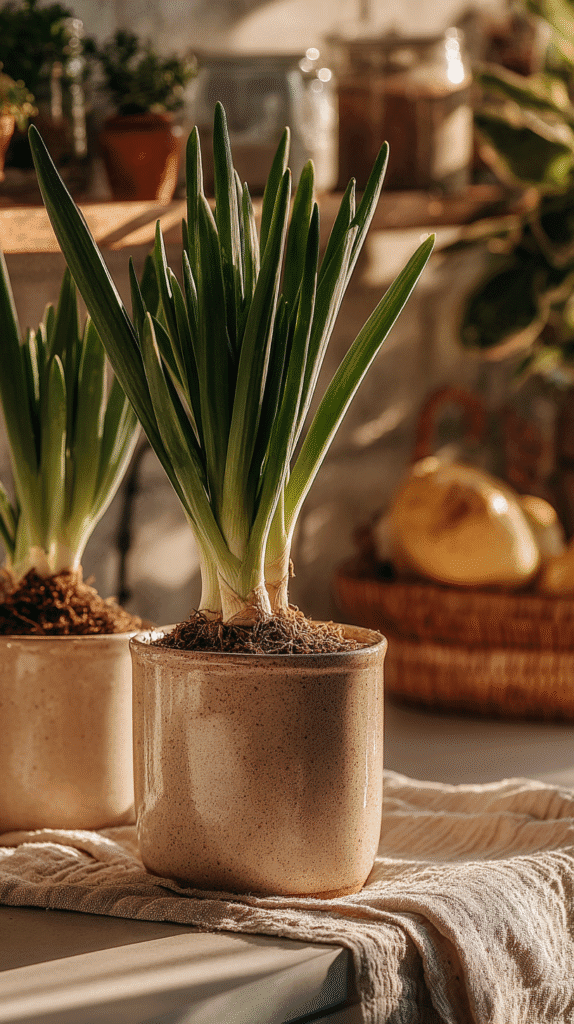
Scallions are a low-maintenance, space-efficient vegetable that can easily be regrown from kitchen scraps. Simply place the white base with roots in a jar of water or plant them in soil. In bright light, they regrow quickly and can be harvested repeatedly.
Scallion growing tips:
- Place white roots in water or plant in soil for sturdier growth
- Snip greens as needed—they’ll keep regrowing
- Adaptable to different light conditions, but thrive in bright light
Garlic greens are equally easy to grow and offer a mild garlic flavor that’s wonderful in cooking. Plant a clove in a small pot with the pointed end up, cover it lightly with soil, and keep it moist. Within a few weeks, you’ll have flavorful greens ready to snip.
Garlic greens growing tips:
- Plant cloves in small pots with well-draining soil
- Keep soil consistently moist but not soggy
- Harvest greens when 8–10 inches tall
Both of these crops grow quickly, take up little space, and give you a fresh, flavorful harvest right from your kitchen counter.
4. Radishes and Baby Carrots
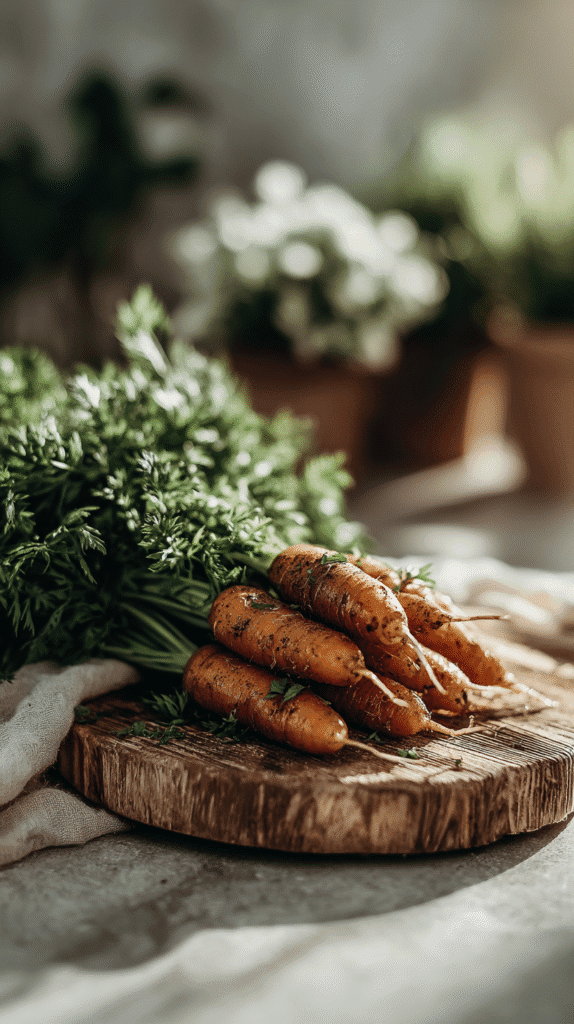
If you want the satisfaction of pulling a vegetable from the soil, radishes and baby carrots are ideal for indoor gardens. They grow well in deeper containers, 6 to 12 inches, and provide a satisfying crunch.
Best indoor radishes:
- Cherry Belle
- French Breakfast
- White Icicle
Best small carrot varieties:
- Parisian
- Thumbelina
- Little Finger
Radishes are one of the fastest root vegetables you can grow, maturing in just 30 days.
Baby carrots take a little longer—50 to 60 days—but are worth the wait for their sweetness. Both crops love sunlight, so place them in your brightest window or supplement with a grow light. Loose, well-draining soil is essential to ensure straight, healthy roots.
5. Herbs
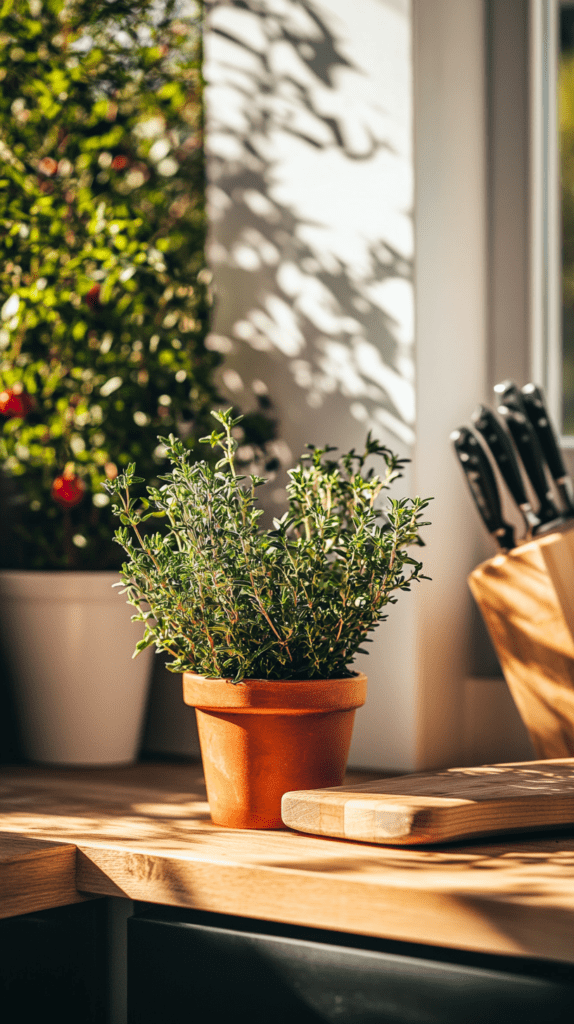
Herbs are the perfect introduction to growing food indoors because they require minimal care, fit easily on a windowsill, and are endlessly useful in the kitchen.
Easy herbs to grow indoors:
- Basil
- Parsley
- Chives
- Mint
- Thyme
Grow them in small pots or mason jars in a sunny spot, and you’ll always have fresh flavor at your fingertips. Pinching back the leaves encourages bushy growth, and regular harvesting keeps the plants productive. Many herbs also bring fragrance and greenery to your space, making them as decorative as they are practical.
6. Bush Tomatoes or Peppers
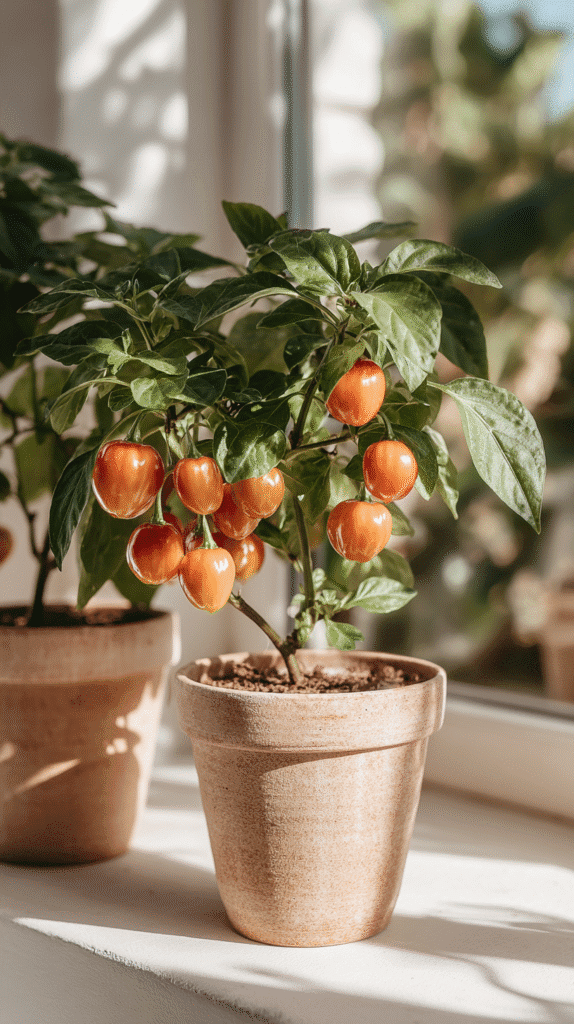
For those ready to take on a slightly bigger challenge, compact tomato and pepper plants can thrive indoors. Look for varieties bred for container gardening, they stay smaller but still produce plenty of fruit.
Best dwarf tomato varieties:
- Tiny Tim
- Red Robin
- Patio Princess
Best compact pepper varieties:
- Mini Bell
- Lunchbox peppers
- Numex Twilight
These plants need more light than most indoor vegetables, ideally 10 to 12 hours a day, so a grow light is often necessary, especially in winter.
With consistent watering, a deep pot, and occasional feeding, you can enjoy homegrown tomatoes and peppers long after the outdoor season ends.
7. Beets
Beets are a dual-purpose crop: you can eat both the roots and the greens. Smaller varieties grow well in deep containers and mature in about two months.
Best indoor beets:
- Detroit Dark Red
- Chioggia
- Golden Detroit
Like carrots, beets prefer loose, well-draining soil and consistent moisture. Their colorful greens add beauty and flavor to salads, while the roots can be roasted, pickled, or sliced fresh.
Caring for Your Indoor Vegetables
Indoor vegetables depend on you for their light, water, and nutrients. Water when the top inch of soil feels dry, rotate containers weekly so all sides get light, and feed plants every 2–4 weeks with a balanced fertilizer safe for edibles. Good airflow helps prevent mold, so don’t crowd your plants too closely together.
Making the Most of a Small Space
Creativity is key in apartment homesteading. Use vertical plant stands, hanging baskets, or wall-mounted shelves to make the most of your light-filled areas. Even a single sunny shelf can hold a miniature salad garden if you choose compact varieties.
Start with crops you already eat often. If fresh salads are your favorite, grow leafy greens and herbs. If you like bold flavors, add peppers or garlic greens. By tailoring your crops to your kitchen habits, you’ll maximize both space and satisfaction.
Encouragement for Starting Small
You don’t need to turn your entire apartment into a garden overnight.
Begin with one or two vegetables and see how it feels. Over time, you’ll build confidence, find your favorites, and maybe even discover that growing food indoors becomes one of the most grounding parts of your day.
Apartment homesteading is about more than just producing food, it’s about creating a connection with what you nurture. And that connection can thrive in even the smallest of spaces.

